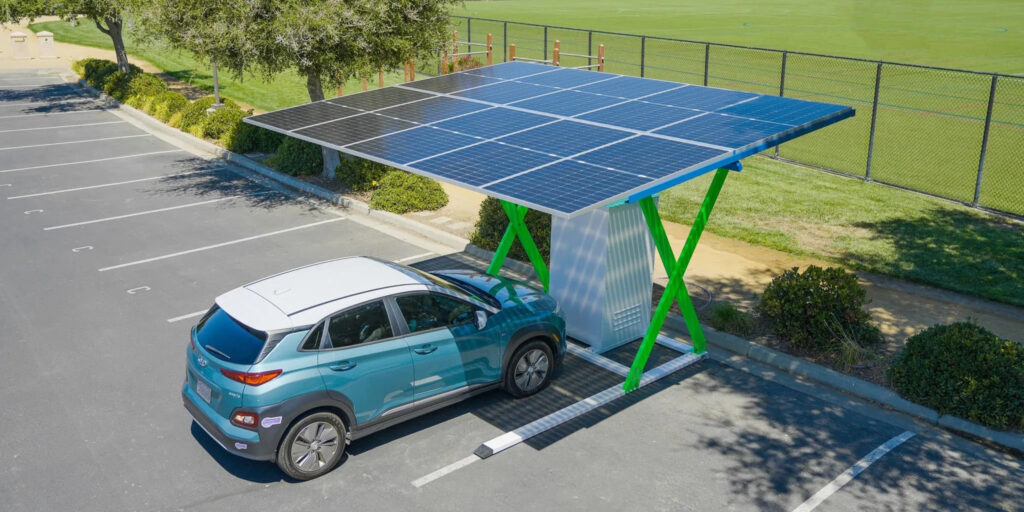- A-44, Behind Assotech, Zeta - 01, Greater Noida
services
Solar Charging Station
A solar charging station is a facility equipped with photovoltaic (PV) panels or solar panels that harness sunlight and convert it into electricity. This electricity is then used to charge electric vehicles (EVs), portable electronic devices, or other battery-powered equipment. Solar charging stations are often installed in locations where access to the power grid may be limited or where reliance on fossil fuels for electricity generation is undesirable. They provide a sustainable and environmentally friendly solution for powering electric vehicles and devices, reducing dependence on non-renewable energy sources and lowering carbon emissions.

Solar Panels: The primary feature of a solar charging station is the array of solar panels installed on the station’s roof or adjacent area. These panels capture sunlight and convert it into electricity through photovoltaic cells.
Charging Equipment: Solar charging stations are equipped with charging points or outlets compatible with the devices or vehicles they are intended to charge. This can include standard electrical outlets, USB ports, or specialized connectors for electric vehicles (EVs) or other battery-powered devices.
Energy Storage: Many solar charging stations incorporate energy storage systems, such as batteries or capacitors, to store excess energy generated during periods of high sunlight. This stored energy can be used to provide power during periods of low sunlight or high demand, ensuring continuous operation even in unfavorable weather conditions.
Grid Connectivity: In some cases, solar charging stations are connected to the electrical grid, allowing them to draw additional power when needed or feed excess energy back into the grid for credit or compensation.
Monitoring and Control Systems: Solar charging stations may feature monitoring and control systems to track energy production, usage, and storage. These systems can provide real-time data on station performance and allow for remote management and troubleshooting.
User Interface: To facilitate easy use, solar charging stations often include a user interface where users can initiate charging sessions, monitor progress, and receive relevant information such as charging rates, availability, and billing details.
Shelter or Canopy: Providing shelter or a canopy over the charging area can protect users and their devices from the elements while also providing shade to reduce heat buildup during charging.
Lighting: Illumination around the charging station, powered by solar energy, enhances safety and accessibility, particularly during nighttime or low-light conditions.
Green Design: Solar charging stations are often designed with sustainability in mind, incorporating eco-friendly materials, efficient energy management systems, and landscaping practices that minimize environmental impact.
Integration with Renewable Energy Sources: Some solar charging stations may be part of a larger renewable energy infrastructure, integrating with other sources such as wind or hydroelectric power to further enhance sustainability and resilie.
